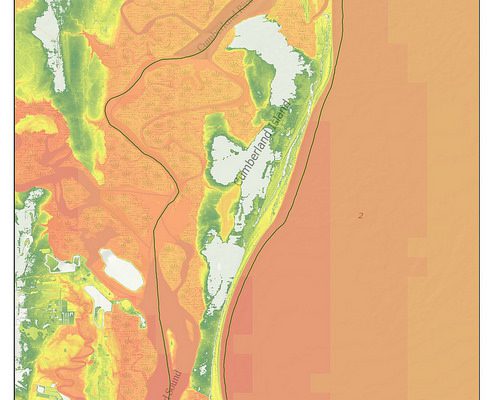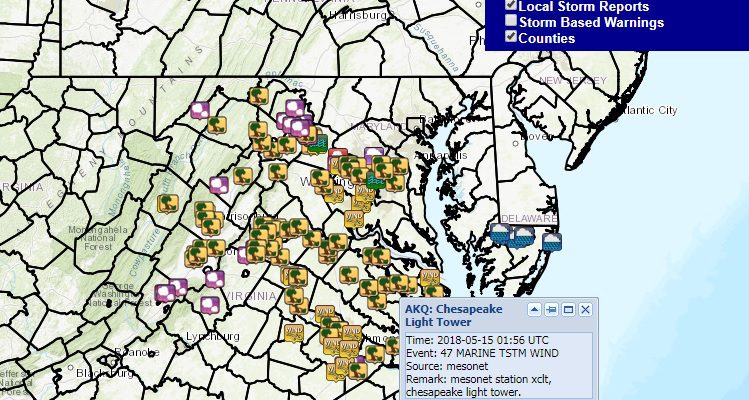Sources of weather and climate data
-

The National Park Service has issued a number of new maps showing the impacts of storm surge on NPS sites such as Biscayne Bay FL, Assateague Island VA, and Fort Sumter SC. As you can imagine, there are quite a few sites for the Southeast since we have such a long coastline. For more information,…
-

The National Weather Service puts out local storm reports for events like high winds, tornadoes and hail in text form, but that is not always useful when you are trying to find severe weather at specific locations. This interactive map for the Southeast will provide severe weather reports that you can use to find occurrences…
Posted in: Sources of weather and climate data -

If you are ever asked about how climate is changing in the Southeast (and it is, although it is more subtle than some other parts of the US), then here is an excellent web site which provides links to several different resources. You can visit it at https://www.globalchange.gov/explore/southeast-caribbean. I do see that the current events…
-

In the past week I’ve run across several sources of maps related to various aspects of climate that you might find useful. NOAA Global Vegetation Health Maps show the conditions of vegetation around the world on zoomable maps. Data are based on satellite scans from space. https://www.climate.gov/maps-data/dataset/global-vegetation-health-images for information or go directly to the map browser at https://www.star.nesdis.noaa.gov/smcd/emb/vci/VH/vh_browseVH.php.…
-

A new study published recently by the Royal Meteorological Society has confirmed what climatologists have known for quite a while–minimum temperatures (which are usually observed around sunrise) are rising faster over time than maximum (daytime) temperatures. One of the results of this is that the daily temperature range between max and min temperatures is decreasing.…
-

There are many places to find weather data, including many sources I have previously mentioned in this blog, including NOAA, CoCoRaHS, USGS, GeorgiaWeather.net, the Florida FAWN network, and others. Here is a source I just learned about which combines many of those datasets together in one place. This is a freely available, interactive and searchable…
Posted in: Sources of weather and climate data -

Today is the highest amount of pollen so far this year according to news reports from Atlanta, and I can believe it from how my sinuses are behaving. But where do you get pollen counts? Here is one source from the American Academy of Allergy Asthma and Immunology that looks to be useful. It provides…